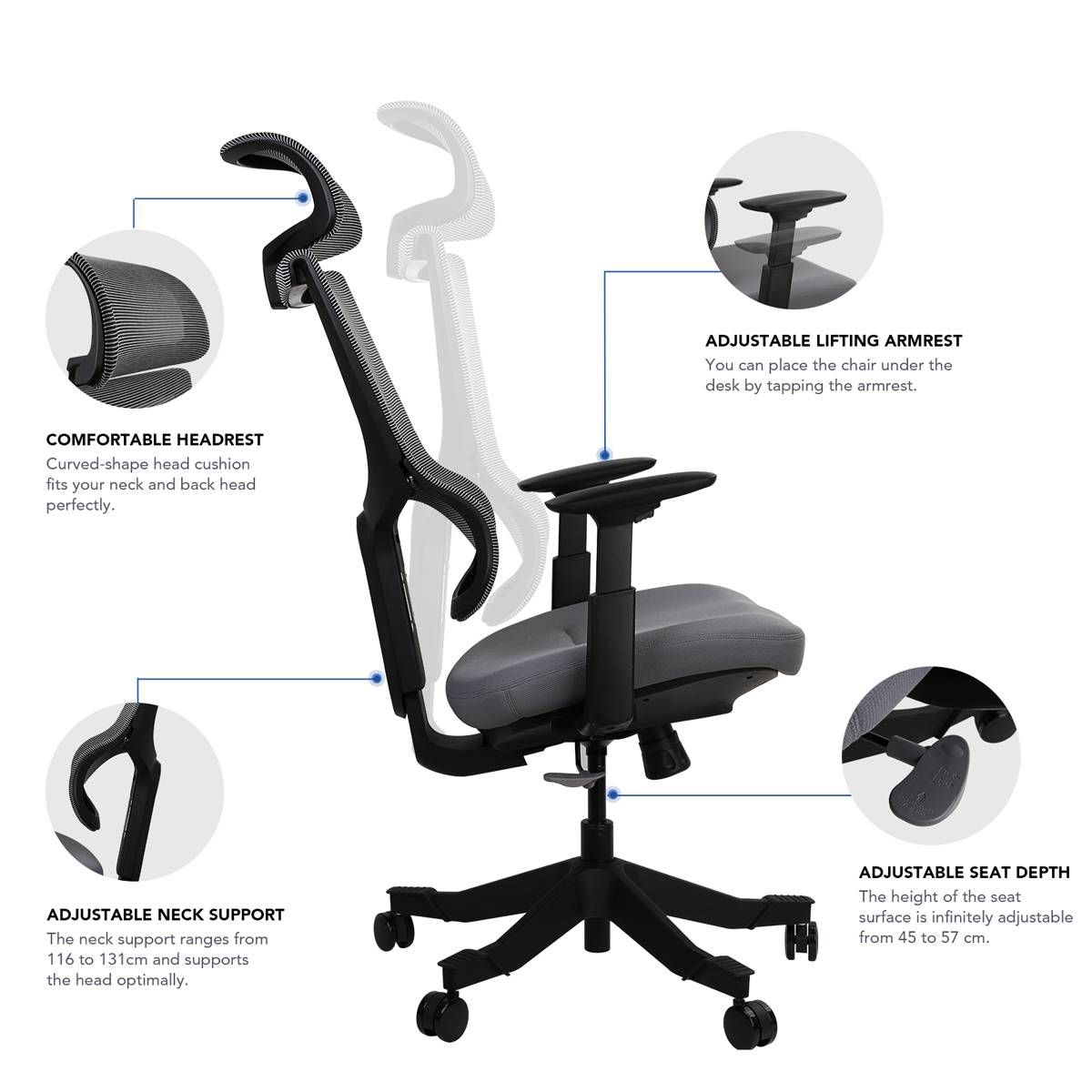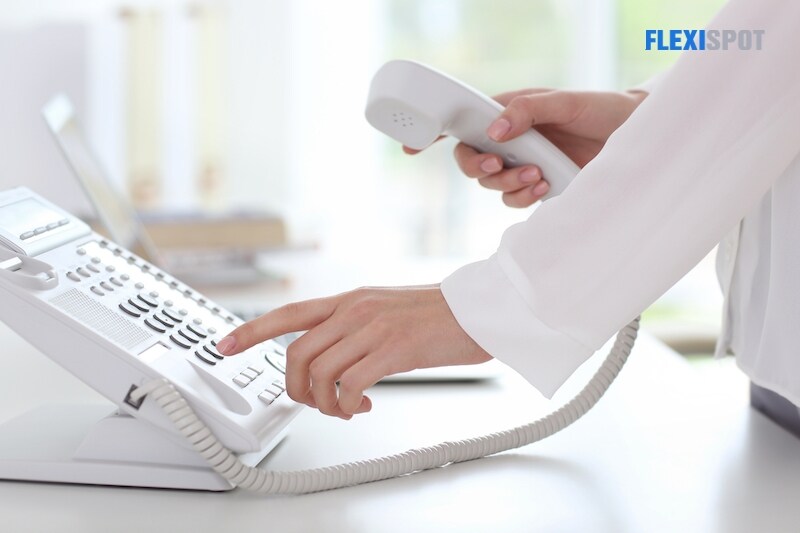The chairs, desks, and office set up in the company premises may not be optimal for most employees. Most employees complain about aches and body pains that are caused by poorly designed office cubicles.
The appropriate and most suitable workplace setting should consider the presence of ergonomics.
The term "ergonomics" refers to a field of study that focuses on the interaction between people and their work environments. It considers the furniture in the workstation as well as your closeness to it.
When we consider this principle, we can conclude that an office should always be as ergonomic as feasible.
If an office is not ergonomically designed, it can cause various issues ranging from discomfort to backache. These issues may worsen as a person grows older, but each person is unique.
As a result, ergonomic furniture should be provided in every office to ensure that you are comfortable at all times.
Ergonomics, like everything else in the world, has a long list of benefits and drawbacks. Ergonomic products facilitate work, boost employee productivity, and much more.
In a nutshell, these are the most desired products, and they should be present in every modern office. However, a prevalent topic is whether ergonomics has issues as well.
As a result, ergonomics issues should be explored to develop appropriate solutions. We have highlighted four ergonomics issues you might face at work in the following paragraphs.
Let us investigate these ergonomic issues and potential remedies for your workspace!
One's Inability to Operate in a Neutral Body Position
On the other hand, is it a neutral position? The failure of most ergonomics, such as ergonomic seats, to maintain a neutral position is one of the most severe ergonomic issues in the workplace. To operate and perform better, the human body must always be in a neutral position.
A neutral position also has some significant advantages, including lowering body pressure, keeping your skeletal system in a better condition, and preventing injury.

Most ergonomics, however, do not provide the same level of comfort unless they are from a reputable brand, such as FlexiSpot, which provides outstanding comfort while still ensuring a neutral position in their ergonomic office chair selection.
The Solution to the Problem: Create a Neutral Position
When you are in an "L" shape, your body is in a neutral position. The body lengthens and aligns itself. The top of the head should be higher than the shoulders. It should not lean forward, backward, or to the sides.
The hips should be aligned with each other and form a 110-degree angle. The pressure on your bones will be relieved as a result of this. It would help if you made a 90-degree bend in your knees to support your upper body.
Keep your feet flat on the floor during the operation. To achieve this position, adjust the chair height. If your chair is not adjustable, you can also use a flat stole.
Movements that are Often Repeated
It is tedious to sit in the same chair for hours on end. To be productive and in a better mood, humans require change. That is why people move around when sitting in their chairs, and it is one of the most severe ergonomic issues in the workplace.
Many injuries develop gradually over time. Your arms, back, or feet do not all hurt at the same time. With each repetitive movement, it takes time. What exactly are these movements?
Every action counts, from picking up the phone to penning a letter. Consistent use of your muscles and body parts causes muscle stress, bone pressure, and musculoskeletal system disturbance.
Continually Switch Tasks
Set aside a particular amount of time for yourself, perhaps an hour. Then, every hour, alternate your tasks. This will eliminate repetitive movements and protect you from any damage.
When you go from one job to another, the body parts involved in the previous task take a break and recover. This will also keep you productive. We also urge that employees obtain some adequate ergonomic gear to help with this. From the employers' point of view, if you let employees return from working from home, it would be very beneficial to provide them with the right office equipment.
You can start by getting an excellent standing desk, an ergonomic chair, and other valuable accessories from FlexiSpot.
A Situation that is Not Optimal
Another ergonomic issue has arisen. In offices and even in classrooms, it is common to sit in an uncomfortable position. People do not care about how they sit at work. When employees do not sit in a neutral position, they are in an unfavourable position.
This usually occurs when we are too focused on our tasks and do not pay attention to how we work. When you are in an awkward situation, your muscles' efficiency drops, and your productivity drops. You are quickly fatigued, and you require more energy to perform at a higher level.
It also results in musculoskeletal damage. Reaching, twisting, bending, and lifting, for example, are all undesirable poses.
Furthermore, if you install a laptop, monitor, keyboard, or other devices in a more distant location, you risk falling prey to a terrible position. But do not worry, there is a solution, which we will go through below.
Keep Your Belongings Close at Hand
Place that closer to whatever you are working on. If you are writing anything on a piece of paper or a notepad, for example, pull your chair closer to it. Ensure that everything is at arm's reach.
Maintaining a neutral stance is more accessible when the body is kept close together. Your body will not twist, bend, or get into an awkward position. Pause if you are feeling a little uneasy or in pain. Make sure to move about, stretch your muscles, and bring objects closer to you.
Seating in the Same Place at the Same Time
Seating in the same position for an extended time can exhaust your body, which is a severe ergonomic issue. It has also been proposed as a result of research. When the body is kept still for an extended time, it is more likely to suffer from musculoskeletal damage, obesity, and even type-2 diabetes.
Frequently Get Up
Take a break every 30 minutes while seated in the same position to get up and walk about a little to avoid this ergonomic problem. Do a circuit around the office, take a short stroll, stand, and stretch for a few minutes, and engage your body in some physical activities.
For example, if you have an office standing desk, take your belongings and work there for a while. These little pauses can aid in preserving excellent health, reducing body pain, and improving workplace effectiveness.
Employers bear the primary responsibility for all of their employees' well-being. Employers must never put their employees' health and safety at risk. Look for the best office chair for lower back pain as an employer to protect your employees from unpleasant back discomfort.
Arrange training sessions for your employees on the solutions as mentioned above. Tell them about other challenges, such as sitting cross-legged in a chair, in addition to the ones stated above. Please encourage them to exercise caution.



